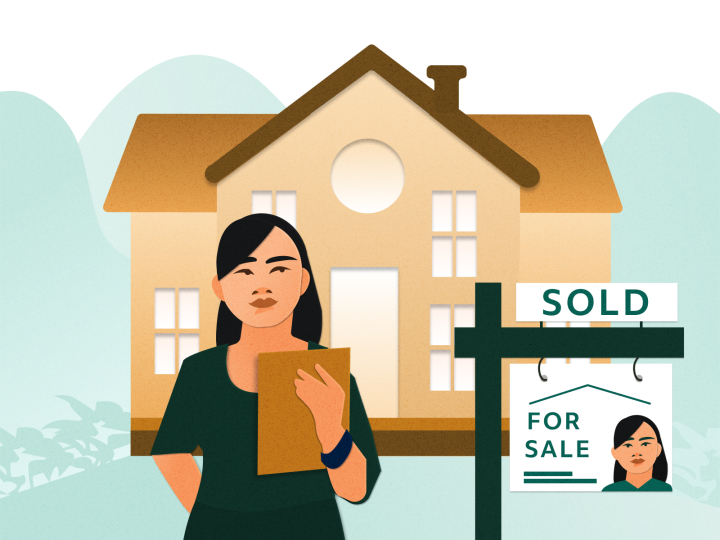The Future of Real Estate: Patterns and Opportunities to Watch
As the genuine estate landscape develops, it comes to be progressively vital to comprehend the arising fads and chances that will specify the industry in the coming years. With these characteristics at play, a more detailed examination of the strategies and adjustments necessary for success discloses appealing possibilities that could reshape financial investment methods and market habits.
Technical Advancements in Property
Over the last few years, the property market has actually accepted a wave of technological technologies that are transforming standard techniques. These advancements have actually considerably boosted efficiency, openness, and decision-making procedures within the sector. Among one of the most noteworthy innovations is the rise of huge data analytics, which permits property professionals to examine market trends, predict residential or commercial property worths, and identify investment opportunities with extraordinary accuracy. This data-driven method enables stakeholders to make enlightened choices and minimizes the risks connected with property purchases.
Furthermore, online truth (VR) and enhanced truth (AR) modern technologies are reinventing property marketing by offering immersive experiences for prospective buyers and occupants. These tools enable customers to perform virtual tours of homes, therefore simplifying the search procedure and improving client involvement. Blockchain modern technology is acquiring traction as a method to safeguard transactions and keep transparent documents, thus lessening scams and speeding up the closing procedure.
Smart home technologies are likewise coming to be significantly prevalent, making it possible for property owners to keep an eye on and control their residential properties remotely (Real Estate Lockhart). Collectively, these technical advancements are improving the landscape of realty, cultivating a much more efficient, clear, and customer-centric industry
Need for Sustainable Properties
As consumers increasingly prioritize environmental responsibility, the need for sustainable residential properties has risen in the property market. This shift mirrors a more comprehensive social fad toward sustainability, with property buyers and investors looking for residential properties that lessen ecological effect while maximizing energy effectiveness. Attributes such as solar panels, energy-efficient home appliances, and lasting structure materials are now considered as vital as opposed to optional.

Additionally, the rise of eco-friendly neighborhoods, which prioritize walkability and access to public transport, additionally highlights this trend. These growths appeal to eco aware buyers and advertise a much healthier way of living.
As the need for lasting properties remains to rise, industry stakeholders should adjust to these assumptions. By accepting innovative techniques and focusing on sustainability, the realty sector can not only meet consumer need but additionally contribute to a more lasting future.
Transforming Purchaser Demographics

Furthermore, the aging population is reshaping demand for real estate. Baby boomers are looking for scaled down homes that offer access and reduced maintenance, frequently preferring urban setups with explanation neighboring facilities. This change requires a focus on multi-generational housing options that accommodate varying needs.
In addition, cultural variety is playing an essential duty in actual estate patterns. As these market changes continue to advance, actual estate specialists should adapt their strategies to deal with the needs of these diverse customers (Real Estate Lockhart).
Rise of Remote Job Influence
Progressively, the rise of remote work is transforming the realty landscape, triggering significant shifts in customer preferences and place options. As employees appreciate the flexibility of working from home, many are reevaluating their domestic requirements, leading to a rise popular for buildings in suv and country areas. This trend is mostly driven by the wish for more roomy living atmospheres that can accommodate home workplaces and a far better lifestyle.
Moreover, city facilities, as Related Site soon as the prime focus for buyers, are seeing a gradual decline popular as people prioritize cost and access to nature. Subsequently, genuine estate developers and financiers are moving their emphasis toward residential properties that provide home workplace spaces, outdoor features, and distance to essential solutions.
This developing landscape requires a reevaluation of typical market strategies. Actual estate professionals must adjust to the altering preferences of customers, stressing the value of way of living consider their advertising approaches. On top of that, building contractors are increasingly focusing on versatile flooring strategies that cater to the twin needs of living and working, guaranteeing that they stay competitive in a quickly altering market. The ramifications of remote work with realty are extensive, forming future trends and possibilities.
Financial Investment Opportunities in Emerging Markets
Financial investment chances in arising markets are consistently drawing in interest from investor looking for diversification and development potential. These markets, defined by rapid financial growth, enhancing urbanization, and an expanding middle class, existing distinct leads for savvy financiers. Nations in Southeast Asia, Africa, and Latin America are seeing considerable framework improvements and desirable federal government policies, which better enhance their charm.
Realty markets such as household, commercial, and logistics are experiencing increased need as a result of metropolitan movement and evolving consumer preferences. Significantly, cities like Ho Chi Minh City, Nairobi, and Medellín are coming to be hotspots for investment because of their increasing economies and youthful demographics.
Financiers need to conduct extensive market analyses to recognize key fads, such as shifts in populace characteristics and economic stability, which can affect home values. Additionally, partnerships with local real estate firms can help with read more successful entry and navigating in these markets.
Nevertheless, it's essential to be mindful of potential risks, including political instability and regulative difficulties. By evaluating these elements and adopting a long-term perspective, capitalists can properly maximize the profitable opportunities arising in these creating areas.

Final Thought
To conclude, the future of property will be significantly affected by technical innovations, a growing focus on sustainability, and advancing customer demographics. The increase of remote work is improving real estate preferences, especially in suburban locations. In addition, arising markets present substantial financial investment possibilities for stakeholders going to adapt to these modifications. Navigating this changing landscape will need tactical collaborations and a keen understanding of market characteristics to profit from the patterns forming the market.
As the actual estate landscape evolves, it becomes significantly vital to recognize the emerging patterns and opportunities that will certainly define the sector in the coming years. One of the most noteworthy developments is the increase of large information analytics, which allows actual estate specialists to analyze market patterns, forecast building worths, and determine investment possibilities with unmatched precision.As consumers significantly prioritize environmental responsibility, the demand for lasting buildings has surged in the real estate market. The implications of remote work on real estate are profound, forming future fads and possibilities.
Financial investment possibilities in arising markets are consistently attracting interest from genuine estate financiers seeking diversification and growth potential.